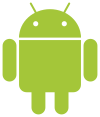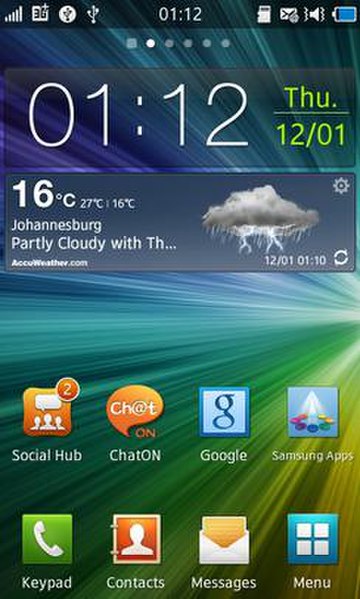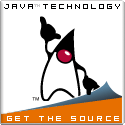hi guys today after my friends recommendation here is a brief introduction on all (almost)mobile operating systems
SYMBIAN

Symbian is a mobile operating system (OS) and computing platform designed for smartphones and currently maintained by Accenture. The Symbian platform is the successor to Symbian OS and Nokia Series 60; unlike Symbian OS, which needed an additional user interface system, Symbian includes a user interface component based on S60 5th Edition. The latest version, Symbian^3, was officially released in Q4 2010, first used in the Nokia N8. In May 2011 an update, Symbian Anna, was officially announced, followed by Symbian Belle in August 2011.
Symbian OS was originally developed by Symbian Ltd. It is a descendant of Psion's EPOC and runs exclusively on ARM processors, although an unreleased x86 port existed.
Some estimates indicate that the cumulative number of mobile devices shipped with the Symbian OS up to the end of Q2 2010 is 385 million.
By April 5, 2011, Nokia released Symbian under a new license and converted to a proprietary shared-source model as opposed to an open source project.
On February 11, 2011, Nokia announced that it would migrate away from Symbian to Windows Phone 7. In June 22, 2011 Nokia has made an agreement with Accenture as an outsourcing program. Accenture will provide Symbian based software development and support services to Nokia through 2016 and about 2,800 Nokia employees will be Accenture employees at early October 2011. The transfer was completed on September 30, 2011.
so if you are a nokia lover and durability,battery power, affordability and connectivity are most critical (needed) ther you are free to go with Symbian. it has lots of bugs and vulnerabilities in series 40 and series 60. series 40 are best for indian and lower budgets but you will not get support updates from nokia after 2016 i myself use nokia 5130c
ANDROID

 Android is an operating system for mobile devices such as smartphones and tablet computers. It is developed by the Open Handset Alliance led by Google.
Android is an operating system for mobile devices such as smartphones and tablet computers. It is developed by the Open Handset Alliance led by Google.
Google purchased the initial developer of the software, Android Inc., in 2005. The unveiling of the Android distribution on November 5, 2007 was announced with the founding of the Open Handset Alliance, a consortium of 84 hardware, software, and telecommunication companies devoted to advancing open standards for mobile devices.Google released most of the Android code under the Apache License, a free software license. The Android Open Source Project (AOSP) is tasked with the maintenance and further development of Android.
Android consists of a kernel based on the Linux kernel, with middleware, libraries and APIs written in C and application software running on an application framework which includes Java-compatible libraries based on Apache Harmony. Android uses the Dalvik virtual machine with just-in-time compilation to run Dalvik bytecode, which is usually translated from Java bytecode. Android has a large community of developers writing applications ("apps") that extend the functionality of the devices. Developers write primarily in a customized version of Java. There are currently approximately 300,000 apps available for Android, from a total of 500,000 apps over the life of Android. Apps can be downloaded from third-party sites or through online stores such as Android Market, the app store run by Google.
Android was listed as the best-selling smartphone platform worldwide in Q4 2010 by Canalys with over 190 million Android devices in use by October 2011.
so all and all if you are young like touch screen and like games, apps,want some extra stuff dont want better battery then android is for you the best pro of android is the HUGE market and battery part is not good. the look of android is fresh and you can also make your own firmware and the best of all ITS OPEN SOURCE because of it even chinese phones are having android lol they are delicate
i currently use galaxy Y of samsung
iOS (iphone)

iOS (formerly known as iPhone OS) is Apple's mobile operating system. Originally developed for the iPhone, it has since been extended to support other Apple, Inc. devices such as the iPod touch, iPad and Apple TV. Apple, Inc. does not license iOS for installation on third-party hardware. As of October 4, 2011, Apple, Inc.'s App Store contains more than 500,000 iOS applications, which have collectively been downloaded more than 18 billion times. In the last quarter of 2010, it had a 26% share of the smartphone operating system market in terms of units sold, behind Google's Android and Nokia's Symbian. As of May 2010, it accounted for 59% of mobile web consumption—including both the iPod touch and the iPad—in North America.
The user interface of iOS is based on the concept of direct manipulation, using multi-touch gestures. Interface control elements consist of sliders, switches, and buttons. The response to user input is immediate and provides a fluid interface. Interaction with the OS includes gestures such as swipe, tap, pinch, and reverse pinch, all of which have specific definitions within the context of the iOS operating system and its multitouch interface. Internal accelerometers are used by some applications to respond to shaking the device (one common result is the undo command) or rotating it in three dimensions (one common result is switching from portrait to landscape mode).
iOS is derived from Mac OS X, with which it shares the Darwin foundation, and is therefore a Unix-like operating system by nature.
In iOS, there are four abstraction layers: the Core OS layer, the Core Services layer, the Media layer, and the Cocoa Touch layer. The current version of the operating system (iOS 5.0) uses roughly 774.4 megabytes of the device's storage, varying for each model.
personally i dont have experienced of iOS powerd devices so i dont have any comments on it. its appstore is also nice
BADA (os)



Bada (stylized as bada) is an operating system for mobile devices such as smart phones and tablet computers. It is developed by the Samsung Electronics. Its name is derived from "바다 (bada)", meaning "ocean" or "sea" in Korean. It ranges from low-end feature phones to high-end smart phones.
To help grow the Bada OS, Samsung may make it open-source in 2012 including using at smart TVs
Bada, as Samsung defines it, is not an operating system itself, but a platform with a kernel configurable architecture, which allows using either a proprietary real-time operating system (RTOS) kernel, or the Linux kernel. According to copyrights displayed by Samsung Wave S8500, it uses code from FreeBSD, NetBSD and OpenBSD, although other phones might use Linux instead.
On the kernel are layers for devices, services, and frameworks. The device layer provides core functions such as graphics, protocols, telephony and security. The service layer provides more service-centric features such as SMS, mapping and in-app-purchasing. To provide such features there is a so-called bada Server. The top layer, the framework layer provides an application programming interface (API) in C++ for application developers to use.
Bada provides various UI controls to developers: It provides assorted basic UI controls such as Listbox, Color Picker and Tab, has a web browser control based on the open-source WebKit, and features Adobe Flash, supporting Flash 9(or 10 in the 2.0). Both the WebKit and Flash can be embedded inside native Bada applications. Bada supports OpenGL ES 2.0 3D graphics API and offers interactive mapping with point of interest (POI) features, which can also be embedded inside native applications. It supports pinch-to-zoom, tabbed browsing and cut, copy, and paste features.
Bada supports many mechanisms to enhance interaction, which can be incorporated into applications. These include various sensors such as motion sensing, vibration control, face detection, accelerometer, magnetometer, tilt, Global Positioning System (GPS), and multi-touch.
Native applications are developed in C++ with the Bada SDK, and the Eclipse based integrated development environment (IDE). GNU-based tool chains are used for building and debugging applications. The IDE also contains UI Builder, with which developers can easily design the interface of their applications by dragging and dropping UI controls into forms. For testing and debugging, the IDE contains an emulator which can run apps.
not a great os but works nicely
Maemo (mobile linux)


Maemo is a software platform developed by the Maemo community for smartphones and Internet tablets. It is "based" on the Debian Linux distribution,
The platform comprises the Maemo operating system and the Maemo SDK.
It is not open source, though it uses some open source code. To use or develop for the device, proprietary software from Nokia is mandatory.
Maemo is mostly based on open source code, and has been developed by Maemo Devices within Nokia in collaboration with many open source projects such as the Linux kernel, Debian, and GNOME. Maemo is based on Debian GNU/Linux and draws much of its GUI,frameworks, and libraries from the GNOME project. It uses the Matchbox window manager, and the GTK-based Hildon as its GUI and application framework.
The UI in Maemo 4 is similar to many handheld interfaces, and features a "home" screen, which acts as a central point from which all applications and settings are accessed. The home screen is divided into areas for launching applications, a menu bar, and a large customisable area that can display information such as an RSS reader, Internet radio player, and Google search box.
The Maemo 5 UI is slightly different: The menu bar and info area are consolidated to the top of the display, and the four desktops can be customized with shortcuts and widgets.
maemo is not for normal users its
At the Mobile World Congress in February 2010, it was announced that the Maemo project would be merging with Moblin to create theMeeGo mobile software platform.
for application developers and tablet users though its not more popular but still nokia N9 is amazing phone
The Nokia N9 is a smartphone made by Nokia based on the MeeGo "Harmattan"
Blackberry

BlackBerry OS is a proprietary mobile operating system, developed by Research In Motion for its BlackBerry line of smartphonehandheld devices. The operating system provides multitasking and supports specialized input devices that have been adopted by RIM for use in its handhelds, particularly the trackwheel, trackball, and most recently, the trackpad and touchscreen.
The BlackBerry platform is perhaps best known for its native support for corporate email, through MIDP 1.0 and, more recently, a subset of MIDP 2.0, which allows complete wireless activation and synchronization with Microsoft Exchange, Lotus Domino, or Novell Group Wise email, calendar, tasks, notes, and contacts, when used with BlackBerry Enterprise Server. The operating system also supports WAP 1.2.
Updates to the operating system may be automatically available from wireless carriers that support the BlackBerry over the air software loading (OTASL) service.
Third-party developers can write software using the available BlackBerry API classes, although applications that make use of certain functionality must be digitally signed.
Java (software cross platform)

Java ME has become popular in mobile devices, where it competes with Symbian, BREW, and the .NET Compact Framework.
The diversity of mobile phone manufacturers has led to a need for new unified standards so programs can run on phones from different suppliers - MIDP. The first standard was MIDP 1, which assumed a small screen size, no access to audio, and a 32kB program limit. The more recent MIDP 2 allows access to audio, and up to 64kB for the program size. With handset designs improving more rapidly than the standards, some manufacturers relax some limitations in the standards, for example, maximum program size.
Google's Android operating system uses the Java language, but not its class libraries, therefore the Android platform cannot be called Java. Android executes the code on the Dalvik VM instead of the Java VM.
Windows phone

Windows Phone is a mobile operating system developed by Microsoft, and is the successor to its Windows Mobile platform, although incompatible with it.\ Unlike its predecessor, it is primarily aimed at the consumer market rather than the enterprise market. It was launched in Europe, Singapore, Australia, New Zealand, the US, Canada, Mexico, and the EPAL region in the second half of 2010, and Asia in early 2011.With Windows Phone, Microsoft offers a new user interface with its design language named Metro, integrates the operating system with third party and other Microsoft services, and controls the hardware it runs on.
Partnership with Nokia
On 11 February 2011, at a press event in London, Microsoft CEO Steve Ballmer and Nokia CEO Stephen Elop announced a partnership between their companies in which Windows Phone would become the primary smartphone operating system for Nokia. The event was largely focused on creating “a new global mobile ecosystem”, suggesting competition with Android and iOS by saying "It is now a three horse race". Integration of Microsoft services with Nokia’s own services were announced; specifically that Bing would power search across Nokia devices, and an integration of Nokia Maps with Bing Maps, as well as Nokia’s Ovi store being integrated with the Windows Phone Marketplace. The partnership involves "funds changing hands for royalties, marketing and ad-revenue sharing", which Microsoft later announced was, "measured in billions of dollars." The first Nokia Windows phones, the Nokia Lumia 800 and Nokia Lumia 710, were announced in October 2011 at Nokia World
recent news has came that windows is going to launch its new win8 os named apollo its nice mobile OS new for all
2011 event.
THE FUTURE QT


 Raj
Raj


 Posted in:
Posted in:
0 comments:
Post a Comment